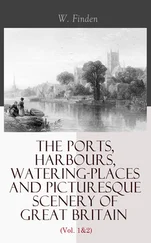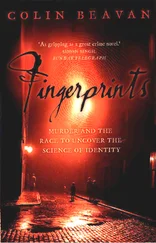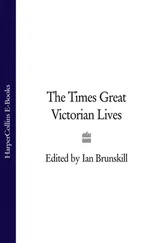Forging the Missing Link: Interdisciplinary Stories
(1992) by Gillian Beer. For negative evidence and the nineteenth-century endeavour to decipher fragments, see
Victorian Detective Fiction and the Nature of Evidence: The Scientific Investigations of Poe, Dickens and Doyle
(2003) by Lawrence Frank, and the same author's 'Reading the Gravel Page: Lyell, Darwin, and Conan Doyle' in
Nineteenth-Century Literature,
December 1989.
142
Dickens compared the detectives . . . new form of crime.
From the second part of 'A Detective Police Party',
House-hold Words,
10 August 1850. In the mid-nineteenth century the idea of detection imprinted itself on natural history, astronomy, journalism - any pursuit that could be construed as a quest for truth.
145
In
Governess Life . . .
destroying the peace of families'.
For the sexual and social uncertainty provoked by the figure of the governess, see
The Victorian Governess
(1993) by Kathryn Hughes.
146
Forbes Benignus Winslow . . . their children'.
In
On Obscure Diseases of the Brain, and Disorders of the Mind
(1860). An extract appears in
Embodied Selves: An Anthology of Psychological Texts 1830-1890
(1998), edited by Jenny Bourne Taylor and Sally Shuttleworth.
146
The detective was another . . . sully a middle-class home.
For the threats to middle-class privacy posed by servants and policemen, see
Domestic Crime in the Victorian Novel
(1989) by Anthea Trodd.
CHAPTER 11
157
During Whicher's inquiries . . . dreadful crime.'
From the
Frome Times,
18 July 1860.
158
The word 'detect' . . . fascination with the case. See Domestic Crime in the Victorian Novel
(1989) by Anthea Trodd. In Alain-Rene Le Sage's
Le Diable Boiteux
(1707), still popular in Victorian England, Asmodeus perched on the steeple of a Spanish church and stretched out his hand to lift every roof in the city, revealing the secrets within.
The Times
in 1828 referred to the French detective Vidocq as 'an Asmodeus'. In
Dombey and Son
(1848), Dickens called for 'a good spirit who would take the house-tops off, with a more potent and benignant hand than the lame demon in the tale, and show a Christian people what dark shapes issue from amidst their homes'. In
House-hold Words
articles of 1850 Dickens referred to how the demon could 'untile and read' men's brains, as if bodies were buildings, and himself took 'Asmodeus-like peeps' into 'the internal life' of houses from the carriage of a train. Janin's reference to Asmodeus was in
Paris; Or the Book of One Hundred and One
(translated 1832).
158
'If every room . . . travelling exhibition.'
From
The Casebook of a Victorian Detective.
159
Mrs Kent gave birth . . . Acland Saville Kent.
Acland was Mrs Kent's mother's maiden name; Francis, Saville's first name, had been her father's Christian name.
CHAPTER 12
161
Whicher reached Paddington . . . at number 40.
Information about Whicher's links to Holywell Street from the census returns of 1851, 1861, 1871, 'Police Informations' of 20 January 1858 in MEPO 6/ 92, and the classified columns of
The Times
of 3 February 1858. 'The tricks of detective police officers' from
The Female Detective
(1864) by Andrew Forrester.
162
the 'Big Ben' clock . . . giving off a brilliant incandescence.
From reports in the
News of the World,
17 June 1860.
162
Dickens visited Millbank one warm day . . . as well as anyone in it.'
From a letter to W.W.F. de Cerjat of 1 February 1861, published in
The Letters of Charles Dickens 1859-61
(1997), edited by Madeline House and Graham Storey.
162
The part of Millbank . . . rising off the river.
Descriptions of Pimlico from 'Stanford's Library Map of London in 1862',
The Criminal Prisons of London and Scenes of London Life
(1862) by Henry Mayhew and John Binny, and
The Three Clerks
(1858) by Anthony Trollope.
163
The public entrance . . . to the south the river.
Description of Scotland Yard from prints and maps in the Westminster local history library, and from
Scotland Yard Past and Present: Experiences of Thirty-Seven Years
(1893) by Timothy Cavanagh. In 1890 the Metropolitan Police headquarters moved to a building on the Thames Embankment, which was named New Scotland Yard, and in 1967 to an office block in Victoria Street, which was given the same name.
163
The letters, addressed to Mayne . . . throughout the month.
Most of the letters from the public are in MEPO 3/61.
165
In early August . . . employed as a Detective, or what?'
These two letters are in the Home Office file on the case, HO 144/20/49113. Sir John Eardley Wilmot, a married man of fifty with eight children, was judge of the county court at Bristol. He went on to be Conservative MP for South Warwickshire from 1874 to 1885. He was not a very successful advocate, according to the
Dictionary of National Biography,
but in 1881 he helped to win compensation for Edmund Galley, who had been wrongly convicted of murder in 1835. Eardley Wilmot died in 1892.
168
The public was fascinated by murder . . . the investigation of murder, too. Punch
magazine had satirised 'murder-worship' in 1849. See
Victorian Studies in Scarlet
(1972) by Richard D. Altick.
In an essay of 1856, George Eliot analysed the appeal of Wilkie Collins' stories: 'The great interest lies in the excitement either of curiosity or of terror . . . Instead of turning pale at a ghost we knit our brows and construct hypotheses to account for it. Edgar Poe's tales were an effort of genius to reconcile the two tendencies - to appal the imagination yet satisfy the intellect, and Mr Wilkie Collins in this respect often follows in Poe's tracks.' From a review of Collins'
After Dark
in the
Westminster Review.
171
On Tuesday, 31 July . . . piece of pickled pork.'
Account of the Walworth murders from
The Times
of 1, 8, 14, 16, 17 & 20 August 1860 and the
News of the World
of 2 September 1860.
175
dramatised for the London stage.
In
Vidocq,
by Douglas Jerrold.
175
The Victorians saw in the detective . . . cast him out.
Many learnt to find these thrills in detective fiction instead. 'Most traditional novels offer some of the pleasures of the keyhole,' observed Dennis Porter in
The Pursuit of Crime: Art and Ideology in Detective Fiction
(1981), 'but apart from various forms of erotica none does so more systematically than the fiction of detection. The secret of its power resides to a large degree in the trick that makes of voyeurism a duty.'
175
A few voices . . . Whicher's defence.
The
Law Times
was sure that Whicher had identified the murderer and her motive. 'The child was his mother's pet, and
malice against his mother -
a fiendish desire to inflict a wound on her through him - would be a motive neither impossible nor improbable . . . Both of them, brother and sister [William and Constance], entertained very strong feelings of hostility, almost amounting to hatred towards the mother of the child . . . they knew that she had won the affections of their father while their mother was yet living. They had complained of neglect and illtreatment by her, and of her partiality for her own children.' Since Saville had been taken from his cot by 'a light, practised hand', the journal added, a woman must have been involved in his abduction.
Читать дальше












